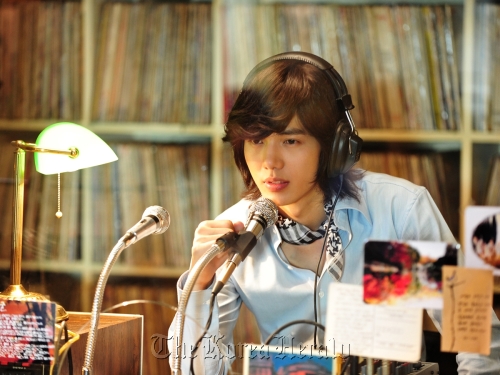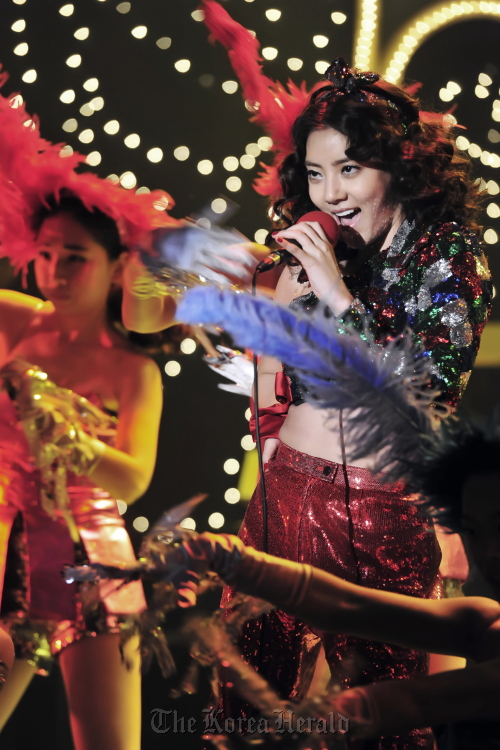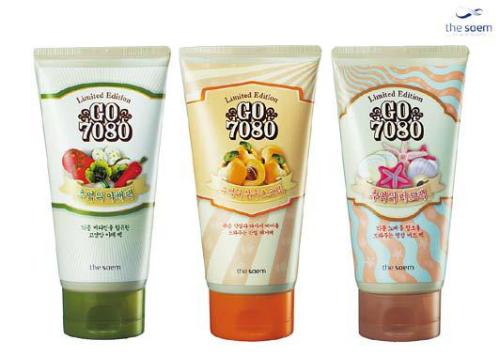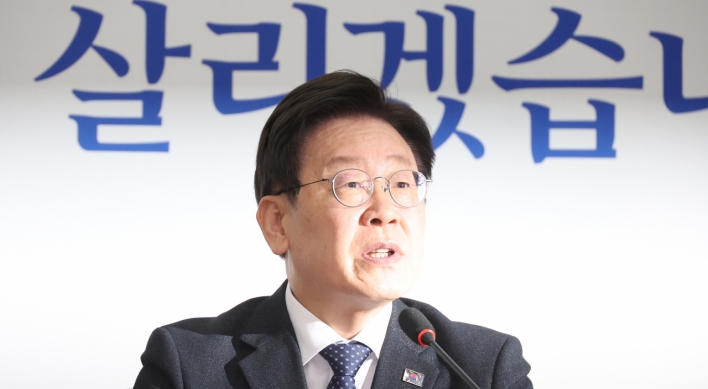
Pressures of digital, modern society triggering return to the ‘innocent’ ’70s and ’80s
No one can dismiss the apparent infiltration of a massive stroke of retro-heavy nostalgia for the music and mood of the ’70s and ’80s.
From the small screen to the silver screen, from the stage to the radio, what South Koreans refer to as the “7080” culture can be found most everywhere.
Ever since the trend started seriously attracting buzz following the unprecedented popularity of C’est Si Bon concerts when they began airing on MBC early this year, retro-references have been popping up in songs, movies, TV shows, exhibitions and even cosmetics.
After musicians from the 1970s music salon C’est Si Bon regrouped to perform on nationwide television, mainstream K-pop went retro with songs like T-ara’s hit single “Roly-Poly” and Super Junior boy band members Donghae and Eunhyuk’s disco-flavored “Opta Opta.”
The popular flick “Sunny” ― which took viewers back to the ’80s ― brought the movement to the silver screen, while series like MBC’s “Light and Shadows” (a drama that kicks off in the 1960’s) and the upcoming “Loverain” ― featuring actor Jang Keun-suk and Girls’ Generation member Yoona ― are bringing the trend into the drama market.
No one can dismiss the apparent infiltration of a massive stroke of retro-heavy nostalgia for the music and mood of the ’70s and ’80s.
From the small screen to the silver screen, from the stage to the radio, what South Koreans refer to as the “7080” culture can be found most everywhere.
Ever since the trend started seriously attracting buzz following the unprecedented popularity of C’est Si Bon concerts when they began airing on MBC early this year, retro-references have been popping up in songs, movies, TV shows, exhibitions and even cosmetics.
After musicians from the 1970s music salon C’est Si Bon regrouped to perform on nationwide television, mainstream K-pop went retro with songs like T-ara’s hit single “Roly-Poly” and Super Junior boy band members Donghae and Eunhyuk’s disco-flavored “Opta Opta.”
The popular flick “Sunny” ― which took viewers back to the ’80s ― brought the movement to the silver screen, while series like MBC’s “Light and Shadows” (a drama that kicks off in the 1960’s) and the upcoming “Loverain” ― featuring actor Jang Keun-suk and Girls’ Generation member Yoona ― are bringing the trend into the drama market.


The beauty sector is no exception. According to a representative of South Korean beauty brand the saem, “the cosmetics industry is also having a retro moment.”
In fact, according to the representative, response to the saem’s own take on the retro trend ― the Go 7080 Limited Edition series ― was so positive that the set of face packs based on popular packs of the past were brought back for yet another round.
Meanwhile, an exhibition titled “This is Korea 1970 KHz: History of Korean Pop Culture” ― complete with artifacts from the past and a DJ booth inspired by the coffee houses of that time ― opened in November at the Sejong Center Exhibition Hall I, allowing the masses an opportunity to delve further into the past.
Clearly, the 7080 trend is major. What isn’t so obvious is why everyone is having such a powerful retro moment.
Exhibition organizer Kyounghyang Art’s planning manager Kim Young-joon, 43, pointed to the parallel economic difficulties society faces today as it did in the ’60s and ’70s when South Korea was beginning to industrialize.
“The culture of the ’60s and ’70s re-fosters hope within the hearts of the masses,” he said.
DJ Kim Kwang-han, 65, who is currently performing at the exhibition’s coffee house takes a two-pronged view on the phenomenon, seeing those in their 50s and 60s succumbing to a nostalgic desire to take a trip down memory lane while the younger generation finds the more “humane” qualities of the past attractive in an increasingly digitalized and therefore “inhumane” society.
The exhibition’s PR team representative Kim Ah-young, 30, shed further light onto why the younger generation might be drawn to the ’70s and ’80s.
“Indie acts like Chang Kiha and the Faces peaked interest amongst youth.”
DJ-producer Plastic Kid a.k.a. Lee Yong-ui, 27, who is co-founder of the cultural movement 360 Sounds, agreed, stating that he thinks Chang Kiha and the Faces (whose sound has a hip folk flavor) might have been the “starting point” for a “sophisticated retro” trend in South Korea.
Lee also pinpointed the novelty factor of the 7080 culture as a yet another potential draw for younger consumers.
“Old school is new to us,” he said.
Middle school teacher Agnes Lee, 35, who brought students to the “This is Korea 1970 KHz” exhibition looked toward the current “highly competitive and mentally exhausting nature of society” as a source of desire for the “laid-back and romantic period” of that time.
Indeed, that era ― according to DJ Kim Kwang-han, who was a major coffee house disc jockey in the ’70s before going on to greater fame in the ’80s ― was most definitely more innocent.
On the cusp of a major democratic revolution, with pop culture just beginning to lay down its roots, music from that time was more than just a tune you downloaded and deleted when you got bored. It was a form of escape from the oppression of the Park Chung-hee regime and from the day-to-day hardships of life.
Escape took shape in the form of coffee houses, called “dabang,” where the youth of the day could find solace in the music fed to them by DJs.
“Back then DJs were the evangelists of pop culture,” said planning manager Kim.
“Our nation’s DJs were pretty much the brothers, the sisters, the fathers and the teachers of the time,” said DJ Kim Kwang-han.
DJ Kim stressed how DJs provided comfort to their patrons through their music, and in turn, they received unbridled devotion from their fans.
According to Kim, coffee house DJs were local stars, and when Kim was a “dabang” DJ decked out in carefully scuffed shoes and long tresses women bought him meals, brought him presents and showered him with kisses.
“They would write song requests on money,” he recalled.
Exhibition visitor Ko Jin-sook, 55, provided a female perspective on the “dabang” culture, recalling how she used to plunk down good money for a cup of coffee so she could listen to music.
“It comforted me then,” she said, explaining how she found solace in music from the hardships of her youth.
Perhaps, that is what people today glean from the culture of the ’70s and ’80s. Comfort, and therefore a sense of hope, may be what people are looking by returning to the past.
It certainly seems to be the case when DJ Plastic Kid predicts a move towards more organic, natural and folk-influenced music, music that sends a hopeful message to the tired and depressed masses.
But does that mean the 7080 retro trend will keep going at full throttle?
Plastic Kid thinks it will fritter out, but, with dramas like “Loverain” on the horizon, it is hard to say it’s over, yet.
By Jean Oh (oh_jean@heraldcorp.com)
-
Articles by Korea Herald







![[Hello India] Hyundai Motor vows to boost 'clean mobility' in India](http://res.heraldm.com/phpwas/restmb_idxmake.php?idx=644&simg=/content/image/2024/04/25/20240425050672_0.jpg&u=)










